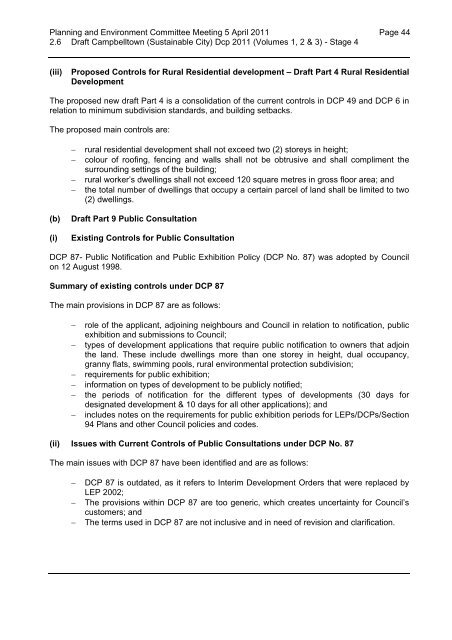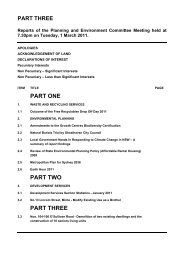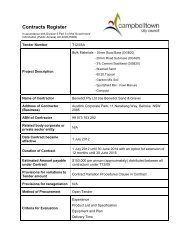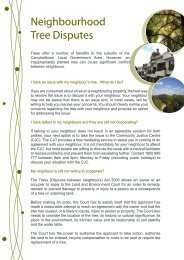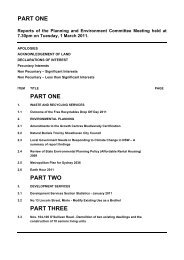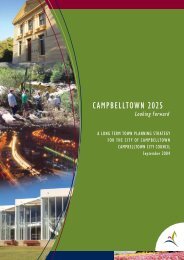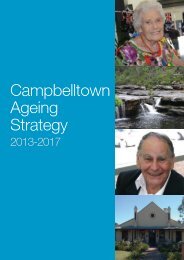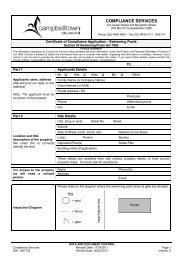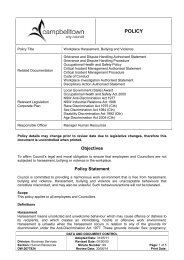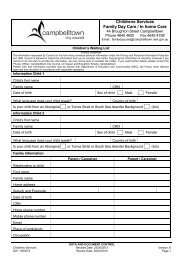PART ONE - Campbelltown City Council - NSW Government
PART ONE - Campbelltown City Council - NSW Government
PART ONE - Campbelltown City Council - NSW Government
You also want an ePaper? Increase the reach of your titles
YUMPU automatically turns print PDFs into web optimized ePapers that Google loves.
Planning and Environment Committee Meeting 5 April 2011 Page 442.6 Draft <strong>Campbelltown</strong> (Sustainable <strong>City</strong>) Dcp 2011 (Volumes 1, 2 & 3) - Stage 4(iii)Proposed Controls for Rural Residential development – Draft Part 4 Rural ResidentialDevelopmentThe proposed new draft Part 4 is a consolidation of the current controls in DCP 49 and DCP 6 inrelation to minimum subdivision standards, and building setbacks.The proposed main controls are:rural residential development shall not exceed two (2) storeys in height;colour of roofing, fencing and walls shall not be obtrusive and shall compliment thesurrounding settings of the building;rural worker’s dwellings shall not exceed 120 square metres in gross floor area; andthe total number of dwellings that occupy a certain parcel of land shall be limited to two(2) dwellings.(b)(i)Draft Part 9 Public ConsultationExisting Controls for Public ConsultationDCP 87- Public Notification and Public Exhibition Policy (DCP No. 87) was adopted by <strong>Council</strong>on 12 August 1998.Summary of existing controls under DCP 87The main provisions in DCP 87 are as follows:role of the applicant, adjoining neighbours and <strong>Council</strong> in relation to notification, publicexhibition and submissions to <strong>Council</strong>;types of development applications that require public notification to owners that adjointhe land. These include dwellings more than one storey in height, dual occupancy,granny flats, swimming pools, rural environmental protection subdivision;requirements for public exhibition;information on types of development to be publicly notified;the periods of notification for the different types of developments (30 days fordesignated development & 10 days for all other applications); andincludes notes on the requirements for public exhibition periods for LEPs/DCPs/Section94 Plans and other <strong>Council</strong> policies and codes.(ii) Issues with Current Controls of Public Consultations under DCP No. 87The main issues with DCP 87 have been identified and are as follows:DCP 87 is outdated, as it refers to Interim Development Orders that were replaced byLEP 2002;The provisions within DCP 87 are too generic, which creates uncertainty for <strong>Council</strong>’scustomers; andThe terms used in DCP 87 are not inclusive and in need of revision and clarification.


